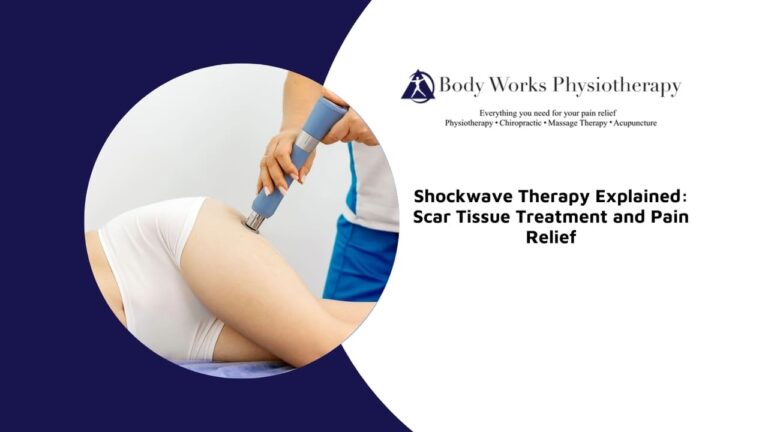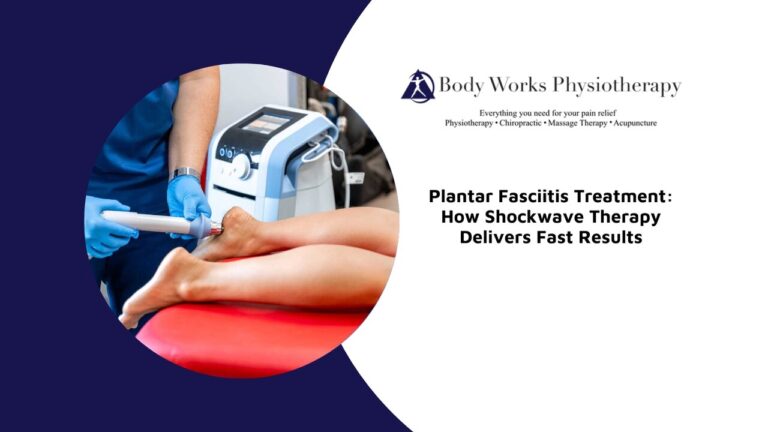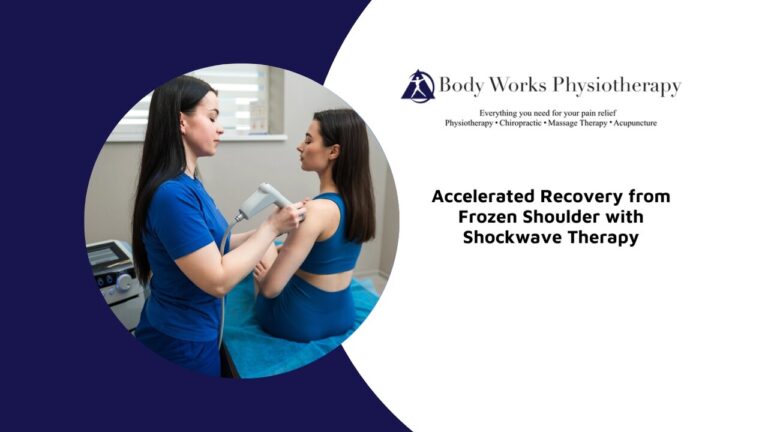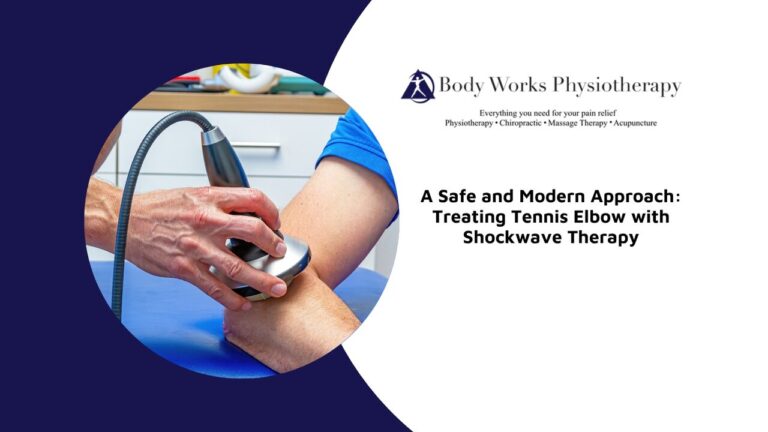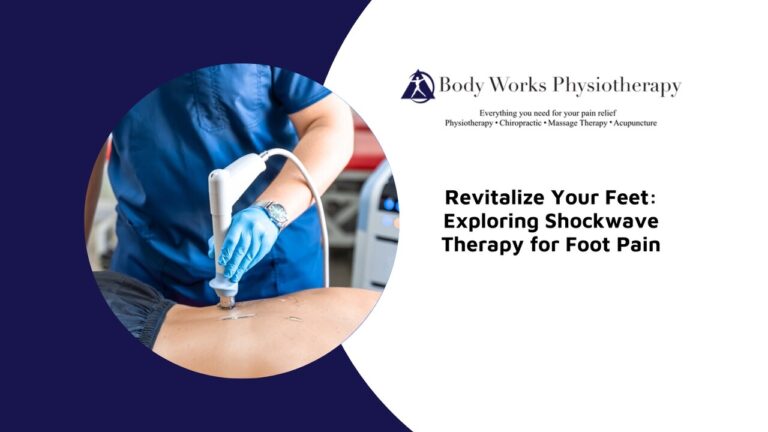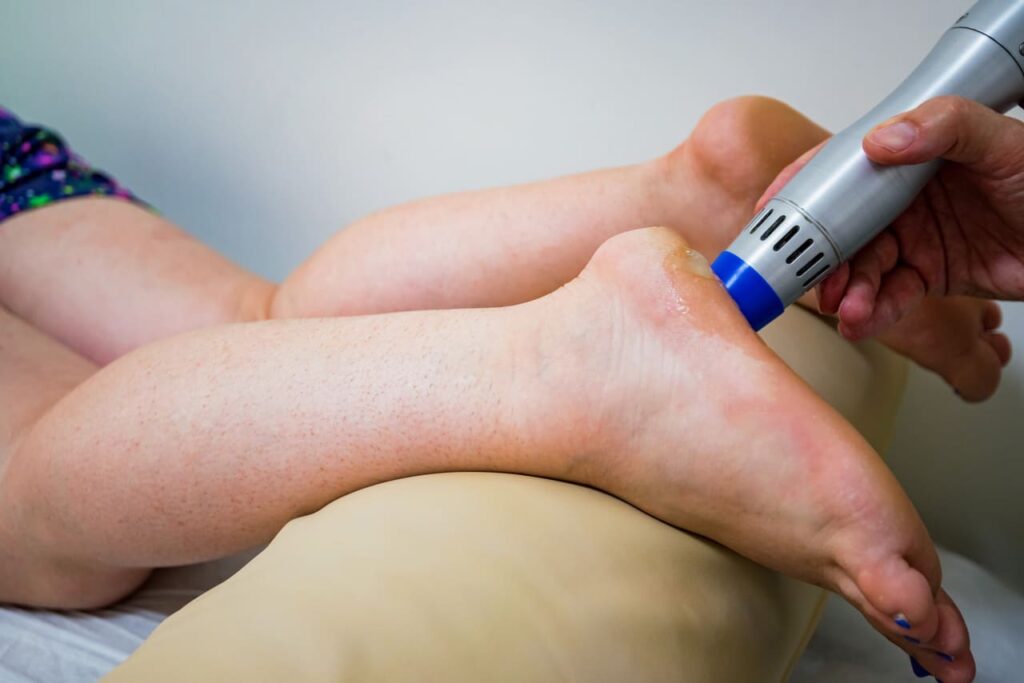
Heel spurs are a common source of heel pain, often making daily activities like walking or standing uncomfortable. They form when calcium deposits build up on the underside of the heel bone, usually due to long-term strain or inflammation. While rest, stretching, and orthotics can help, chronic cases may require a more targeted approach. Shockwave therapy is a non-invasive treatment that uses focused sound waves to stimulate healing, reduce inflammation, and break down calcified deposits. In this blog, we’ll explore how shockwave therapy works for heel spurs, how effective it is, and what to expect from treatment.
What Are Heel Spurs?
Heel spurs are small bony growths that form on the underside of the heel bone, usually where the plantar fascia connects to the heel. They develop over time due to repeated stress, strain, or tension in the area, often caused by poor footwear, overuse, flat feet, or aging. While heel spurs aren’t always painful, they’re frequently linked to plantar fasciitis and can cause discomfort, especially with the first steps in the morning or after long periods of standing. If left untreated, heel spurs can limit mobility and affect daily activities, making early treatment important for long-term relief.
Shockwave Therapy Explained
Shockwave therapy is a non-invasive treatment that uses high-energy acoustic waves to stimulate healing and tissue regeneration in areas affected by pain or chronic injury. Originally used in medical settings to break up kidney stones, this technology has since been adapted for musculoskeletal conditions, including heel spurs. During treatment, a handheld device delivers controlled shockwaves to the affected area. These waves penetrate deep into the tissues, helping to break down calcium deposits and support the repair of damaged structures.
Shockwave therapy is particularly useful for chronic conditions that haven’t responded to more conservative treatments, offering a drug-free and surgery-free solution. Because it targets the source of pain and supports recovery at the cellular level, many people experience significant improvements in mobility and symptom relief after just a few sessions.
Benefits of Shockwave Therapy for Heel Spurs
Shockwave therapy offers a range of benefits for individuals struggling with heel spurs, especially when conservative treatments like rest, orthotics, or medications haven’t been effective. By targeting the root cause of the pain and stimulating the body’s healing mechanisms, this non-invasive therapy promotes long-term recovery and improved mobility.
- Targeted Pain Relief: Shockwave therapy directs high-energy sound waves precisely to the area of inflammation, helping reduce pain without the need for medication or injections.
- Stimulation of Blood Flow: The treatment promotes improved circulation in the affected area, bringing oxygen and nutrients essential for tissue repair and reducing stagnation around the heel.
- Enhanced Collagen Production: Collagen is a key protein in connective tissue healing. Shockwave therapy encourages the formation of new collagen, which strengthens the plantar fascia and surrounding tissues.
- Breakdown of Calcified Deposits: One of the primary causes of heel spurs is the buildup of calcium at the heel bone. Shockwave therapy helps break down these calcifications, making them easier for the body to reabsorb or eliminate.
- Accelerated Cellular Repair: The mechanical stimulation from shockwaves triggers a localized healing response, speeding up cell regeneration and repair of damaged soft tissue.
- Non-Invasive Alternative to Surgery: Unlike surgical procedures, shockwave therapy requires no incisions, anesthesia, or recovery downtime, making it a safer option with fewer risks.
- Improved Function and Mobility: As inflammation decreases and tissues heal, people often experience better foot function, reduced stiffness, and enhanced overall mobility.
For many individuals, shockwave therapy offers an effective, evidence-based solution for heel spur pain—especially when other approaches have failed to provide lasting relief.
Shockwave Therapy Sessions for Heel Spurs: What to Expect
Shockwave therapy sessions for heel spurs are quick, non-invasive, and generally well-tolerated by most people. Knowing what to expect can help you feel more comfortable and prepared for your first appointment.
- Preparation of the Treatment Area: A conductive gel is applied to the heel to help transmit the shockwaves efficiently from the device into the tissues below the skin. This also reduces friction and ensures consistent contact.
- Use of a Handheld Device: A specialized applicator is used to deliver high-energy acoustic waves directly to the affected area. The device emits pulsed waves that penetrate soft tissue and bone to stimulate healing.
- Duration of the Session: Each session typically lasts between 15 and 20 minutes, depending on the severity of the condition and how your body responds to the treatment.
- Sensations During Treatment: Most people describe the sensation as a series of rapid taps or pulses. Some areas may feel more sensitive than others, and mild discomfort is possible—especially over inflamed tissues.
- Tolerance and Adjustments: The practitioner can adjust the intensity of the treatment to ensure it remains comfortable while still being effective. Sessions are generally well-tolerated, even for those new to the therapy.
- Post-Treatment Sensations: Mild soreness or tenderness in the treated area is normal and usually fades within a few hours to a couple of days.
Many people are able to return to normal activities shortly after the session, making shockwave therapy a convenient option for heel spur treatment.
How Many Sessions of Shockwave Therapy Are Needed for Heel Spur Treatment?
The number of shockwave therapy sessions required for treating heel spurs varies based on individual factors, including the severity of the condition, how long the symptoms have been present, and the body’s natural response to treatment. In most cases, people typically undergo between three and five sessions, usually spaced about one week apart. This schedule allows the tissues time to respond and heal between treatments while maintaining therapeutic momentum. Many individuals begin to notice a reduction in heel pain after the first two or three sessions, especially if the inflammation has been persistent but not severe.
However, for optimal results and to ensure the calcified tissue is adequately addressed, completing the full course is essential. More chronic or resistant cases may require additional sessions or follow-up treatments in the months ahead. It’s also important to note that ongoing assessment by the treating clinician will help determine the appropriate number of sessions and whether adjustments are needed based on the individual’s progress and comfort level.
Understanding the Risks and Side Effects of Shockwave Therapy for Heel Spurs
Shockwave therapy is widely regarded as a safe treatment, especially when administered by trained professionals. However, like any medical procedure, it can come with some minor side effects.
- Temporary Redness or Swelling: The treated area may appear slightly red or swollen shortly after the session. This is typically mild and resolves within a day or two without intervention.
- Localized Soreness or Tenderness: Some individuals may experience aching or sensitivity at the site of treatment. This is a normal response as tissues react to the stimulation and usually diminishes within 48 hours.
- Mild Bruising: Rarely, small bruises can appear, especially in individuals with sensitive skin or those prone to bruising. These marks are harmless and fade naturally.
- Sensation of Discomfort During Treatment: A small number of people report brief, sharp discomfort during the actual procedure. This is generally tolerable and can be minimized by adjusting the treatment intensity.
- Post-Treatment Fatigue in the Area: A feeling of fatigue or heaviness in the heel may occur after therapy but typically resolves quickly without affecting mobility.
- Precautions for Specific Conditions: People with blood clotting disorders, open wounds near the treatment area, or those who are pregnant should consult with their healthcare provider before undergoing shockwave therapy.
Overall, side effects are uncommon and short-lived, making shockwave therapy a low-risk option for managing heel spur pain.
Preventing the Recurrence of Heel Spurs: How Shockwave Therapy Helps
While shockwave therapy is highly effective at treating existing heel spurs by reducing inflammation and stimulating tissue repair, its role in preventing recurrence is best viewed as part of a broader approach. The therapy works by promoting natural healing, increasing blood flow, and breaking down calcium deposits—all of which help resolve the current issue. However, if the underlying causes that contributed to the heel spur remain unaddressed, the risk of recurrence still exists.
Factors such as poor footwear, abnormal foot mechanics, overuse, obesity, and prolonged standing on hard surfaces can all contribute to the return of heel spurs over time. For this reason, long-term success often depends on combining shockwave therapy with preventive strategies such as wearing supportive shoes, using custom orthotics if needed, stretching regularly, and managing weight or underlying biomechanical issues. When integrated into a comprehensive care plan, shockwave therapy can not only provide relief but also play a meaningful role in reducing the chances of the problem coming back.
Care Tailored to Your Needs
Shockwave therapy offers a safe, non-invasive, and effective way to manage heel spur pain and support long-term recovery. By addressing both the symptoms and underlying causes, it can help restore comfort and mobility without the need for surgery.At Body Works Physiotherapy in Scarborough, we provide personalized shockwave therapy treatments designed to help you get back on your feet—comfortably and confidently. Book your appointment today and start your journey toward lasting relief.

